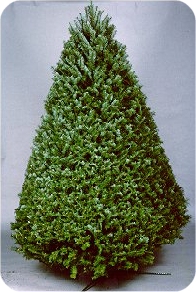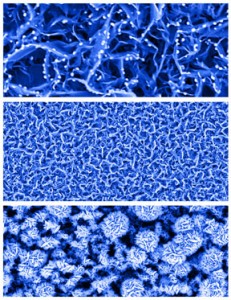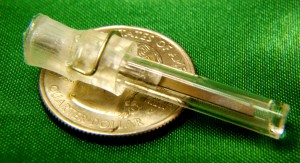According to the Feb. 5, 2013 news item on Nanotechnology Now, nanoHUB , online science and engineering gateway based at Purdue University, Indiana, is going to be receiving a $14.5M five year grant from the US National Science Foundation (NSF),
“Thousands of times a day the leading researchers ‘come’ to Purdue through the globally unique tool of nanoHUB,” Purdue President Mitch Daniels said Tuesday (Feb. 5) in announcing the grant. “The new NSF investment is an affirmation of the brilliance of nanoHUB’s Purdue creators and of its worldwide scientific significance.”
Annually, nearly 250,000 users in 172 countries participate in nanoHUB, an online meeting place for simulation, research, collaboration, teaching, learning and publishing. The nanoHUB provides a library of 267 simulation tools, free from the limitations of running software locally, used in the scientific computing cloud by more than 12,000 people every year.
The Internet-based initiative provides 3,000 resources from more than 1,000 authors for research and education in the areas of nanoelectronics and nanoelectromechanical systems and their application to nano-biosystems. The nanoHUB menu also includes courses, tutorials, seminars, discussions and facilities to foster nano-research collaboration, including the Birck Nanotechnology Center in Purdue’s Discovery Park.
The Purdue University Feb. 5, 2013 news release, which originated the news item, provides more details although some are a bit confusing (Note: Links have been removed),
The Purdue-led Cyber Platform, a part of the Network for Computational Nanotechnology (NCN), will assist researchers across the globe by developing a virtual society that shares simulation software, data and other innovative content to provide engineers and scientists with the fundamental knowledge required to advance nanoscience into nanotechnology.
…
Through Cyber Platform developments and community engagement efforts, the nanoHUB in its next phase is designed to:
* Accelerate research by transforming nanoscience to nanotechnology through the integration of simulation with experimental data.
* Inspire and educate the next-generation nanoscience and nanotechnology workforce.
* Expand the nanoHUB society that uses and shares content on the Web-based portal.
“Our long-term vision for the Cyber Platform is to use the nanoHUB as an online nano society that researchers, practitioners, educators and students depend on daily,” said Purdue electrical and computer engineering professor Gerhard Klimeck, principal investigator of the Purdue-led Cyber Platform. “At the same time, we are excited about how this tool has extended into professional practice as a computational resource for a multidisciplinary culture of innovation grounded in cloud services-enabled workflows.”
The NSF award abstract helps to clear up matters,
Network for Computational Nanotechnology (NCN) was founded in 2002 to advance nanoscience toward nanotechnology via online simulations on nanoHUB.org. Not only has nanoHUB become the first broadly successful, scientific end-to-end cloud computing environment, but it also has evolved well beyond online simulation. Annually, nanoHUB provides a library of 3,000 learning resources to 195,000 users worldwide. Its 232 simulation tools, free from the limitations of running software locally, are used in the cloud by over 10,800 annually. Its impact is demonstrated by 720+ citations to nanoHUB in the scientific literature with over 4,807 secondary citations, yielding an h-index of 31, and by a median time from publication of a research simulation program to classroom use of less than 6 months. Cumulatively, over 14,000 students in over 760 formal classes in over 100 institutions have used nanoHUB simulations.
Despite a decade of transformational success for a broad nanotechnology research and education community, significant gaps remain as work is still performed by isolated individuals and small groups. This fragmentation by specialty hinders tool and data sharing across knowledge domains. Nano areas such as bio, photonics, and materials are only beginning to use nanoHUB while manufacturing, informatics, environmental-health-and-safety are to date not even represented on nanoHUB. The NCN Cyber Platform proposes to address these gaps through efforts in three strategic goals to: 1) accelerate research by transforming nanoscience to nanotechnology through the integration of simulation with experimentation; 2) inspire and educate the next-generation nanoscience and nanotechnology workforce; and 3) grow the nanoHUB society that uses and shares nanoHUB content. Five cross-cutting thrust areas focus on the cyberinfrastructure (CI) and social dynamics of the nanoHUB virtual society: CI innovation; content stewardship and node engagement; education research and precollege/college and lifelong learning; outreach, diversity, and marketing; and CI operations. The 10-year NCN nanoHUB Cyber Platform vision is that nanoHUB will be the online nano society that researchers, practitioners, educators and students depend on day-to-day while simultaneously immersed in professional practice and computational resources for a multidisciplinary culture of innovation grounded in cloud services-enabled workflows.
Intellectual Merit: The NCN nanoHUB strategic plan will answer two fundamental challenges to the next-generation nanoHUB experience: 1) development of technologies that enable simple management and publication of scientific data (experimental and simulation) without additional complex steps: and 2) the establishment of a value system that fosters publication of data, tools, and lectures similar to today’s rewards for journal publications. CI innovation, developed through the leading HUBzero platform as well as in cooperation with other CI efforts, will enable new connection points for research, education, and commercialization, expanded platform tool features to help users exchange and publish data; combined data and tools for verification, validation, and engineering activities; and increase immersive and pervasive features. Through partnerships with professional societies and commercial publishers, nanoHUB will change how researchers publish their simulation results through novel interactive journals that reflect a user’s workflow, link directly back to their data, and make the work reproducible. This value system will drive new content toward nanoHUB, obviating the need for content generation to be monetarily supported by NCN. Through partnerships with the three new NCN content nodes and other NSF-funded nano efforts, NCN will continue to foster content creation to demonstrate value to the authors and will prototype, test, and host the proposed new technologies for broad usage.
Broader Impacts: NCN has developed processes that enabled researchers to rapidly deploy their research codes and innovative tutorials and classes on nanoHUB. To date, these processes harvested research and educational results from 890 contributors world-wide. Expansion into new areas of nano research and education, including pre-college education, represent a huge growth potential for nanoHUB that goes beyond simulation to embracing data management, search, and exploration. Focus on diversity will continue to be an integral part of NCN’s outreach program, in particular through focused workshops and new initiatives such as EPICS High. The NCN-pioneered HUBzero already powers 40 HUBs at 12 institutions, serving a broad range of science and engineering disciplines and commercialization. Through impact assessment and continual contributions to HUBzero software stack releases, nanoHUB will continue to drive impact beyond its nano society into other disciplines and institutions.
While this duplicates some of the text in the NSF award abstract, it does offer some new nuggests, from the Purdue University news release,
The nanoHUB has become the first broadly successful, cloud-computing environment for research across multiple disciplines, with more than 960 citations in scientific literature and 8,000 secondary citations, with nearly one-third of those papers involving experimental data. It also has evolved well beyond online simulation for research.
From New York to London and Moscow to Madrid, more than 14,000 students in 760 formal classes at 185 institutions have used nanoHUB simulations for classroom teaching, homework and projects. The nanoHUB also provides a library of 3,000 learning materials.
“Most of these tools are adopted for formal education in six months, compared with the 3.8 years it takes for the release of new college textbook editions,” Klimeck said.
NCN founding director Mark Lundstrom, the Don and Carol Scifres Distinguished Professor of Electrical and Computer Engineering at Purdue, said a key part of the Cyber Platform project is to engage an ever-larger and more diverse cyber community that shares novel, high-quality nanoscale computation and simulation research and educational resources.
“The reason we created the nanoHUB cyberinfrastructure 10 years ago was to connect those who are doing simulation with experimental collaborators,” Lundstrom said. “Today, it’s called cloud computing.”
Here’s a for those who want to check out the Network for Computational Nanotechnology (NCN. For another history of nanoHUB, check my Nov. 6, 2010 posting and for the little bit I have on HUBzero, there’s my Feb. 20, 2012 posting about the session concerning that platform at the American Association for the Advancement of Science (AAAS) 2012 annual meeting.


